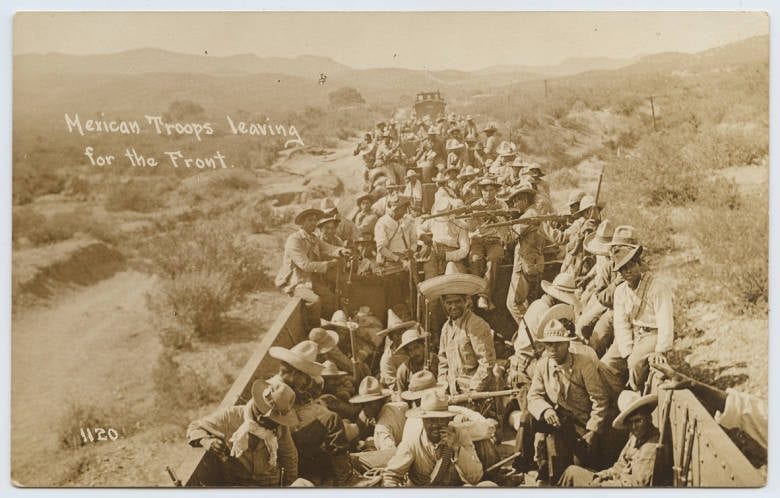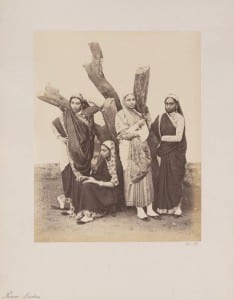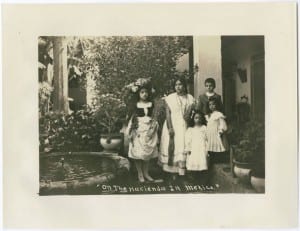This photograph shows four Parsee women standing and sitting outside, in front of a tree. It was taken by William Johnson during 1855-1862 and is part of his series Photographs of Western India Volume I: Costumes and Characters. Although the photograph attempts to display a casual image of women relaxing (which becomes a pointed attempt in the woman leaning on her elbow), in reality the photograph conveys a strained composure, as if the women were told how to pose and where to look.
These women are wearing extravagant clothes and jewelry and are photographed in front of an obviously dead and cut down tree. None of the women seem happy, but rather seem upset and generally morose. They hold an association with wealth reflected in their clothes and demeanor of not really ever working, yet they also ironically seem isolated from the rest of the world, reflected in the dead tree and lack of detail in the background and foreground. Even though the photograph looks like it was taken outside, a feeling of imprisonment is evoked in the viewer.
The juxtaposition of the barren background to the extravagance of the womens’ clothes serves to highlight the womens’ seclusion from broader society as well as the sterile environment (natural and human) in which they live. Photographs like these were employed by the British to morally justify their control of India. The photo becomes representative of the moral justification: “white men saving brown women from brown men.” Because this photograph sets up a scene of isolation for these women, the British become justified in “saving them” from imprisonment in an unhappy life.
http://digitalcollections.smu.edu/cdm/ref/collection/eaa/id/670
This photograph shows a family on a hacienda in Mexico. It was taken by Hickman & Todd in the decade 1910-1919 and is part of his album Views of Mexico. There is one women and four children in this photograph. The woman seems to be their mother, and the father is notably absent. Unlike the photograph of the Parsee women, the background and foreground are vibrant — filled with foliage and flowers as well as a water fountain. The family is also wearing nice clothes, and there are flowers in one of the girl’s hair. None of the people in this photograph are looking at the camera; all are forlornly looking in the distance as if they are waiting for someone (the absent father).
The family has been posed in such a way that highlights their privileged and vibrant life; i.e. their vibrant natural environment reflects their vibrant social environment. The inclusion of all the necessary elements of success (for the father) makes it also seem like the family is being showcased as his possession. This contrasts the barren surroundings in the image of the Parsee women, which lead to a feeling of isolation. Whereas those women did not have anything to do, this family, including the mother who is holding a piece of cloth, are in mid-stride — as if the photograph caught a brief moment of stillness in an overall busy and filled life. In comparison to the four Parsee women who need “saving”, this mother and her children have already been “saved.”
However, in both images men are particularly absent. This absence ironically draws the viewer’s attention to the lack of a man. Rich men of Spanish decent owned these haciendas, and even though there was not an obvious concept of “white,” his whiter complexion and Spanish heritage would have contributed to his wealth. Both photographs portray native women that are dependent on the white man, and in this particular photograph the family is incomplete without him present and waiting for him to return before they can live their life. Even though they have been “saved” they still are dependent on the white man, which further justified Spain’s continued control of Mexico.
http://digitalcollections.smu.edu/cdm/ref/collection/mex/id/536



